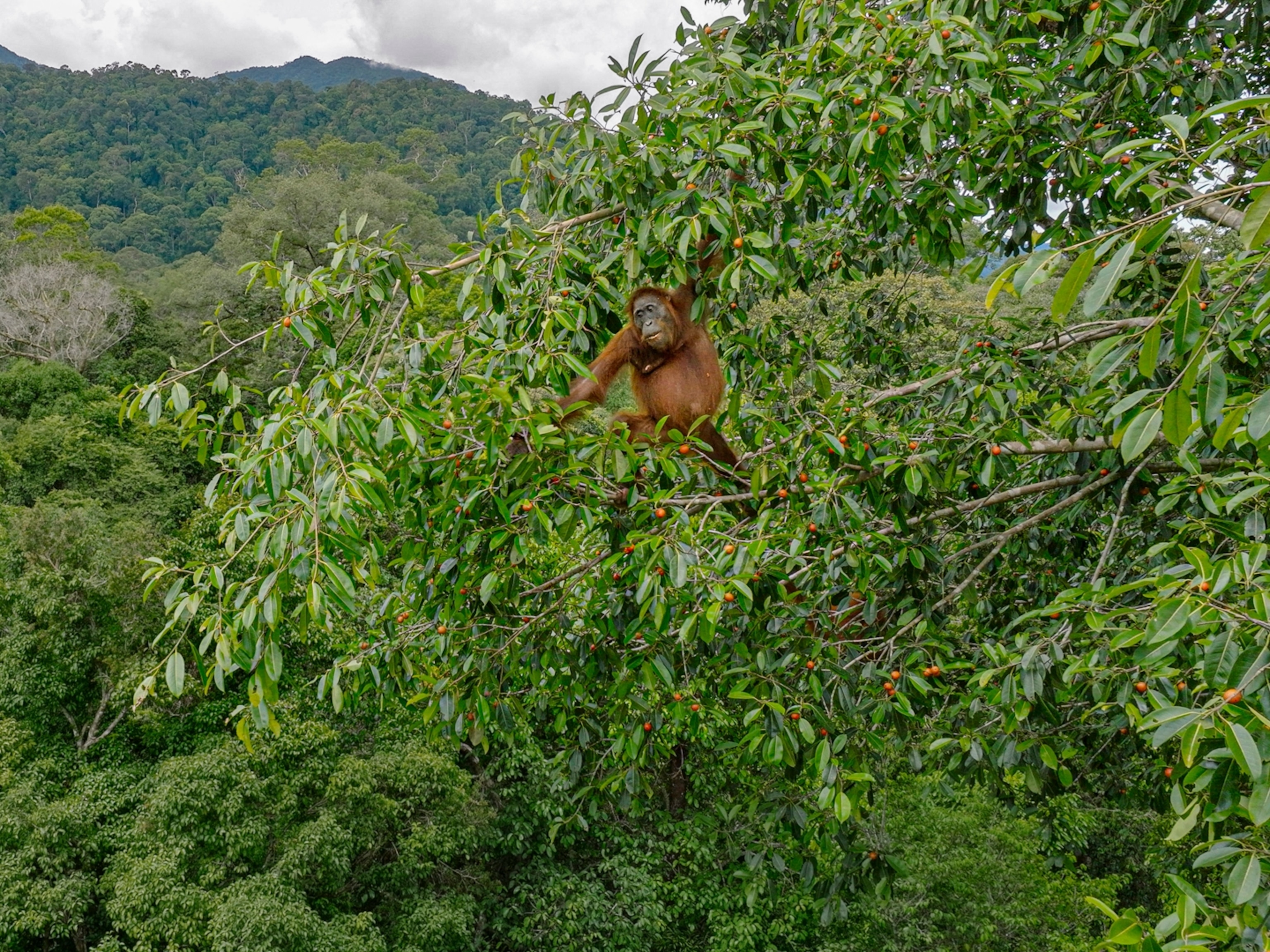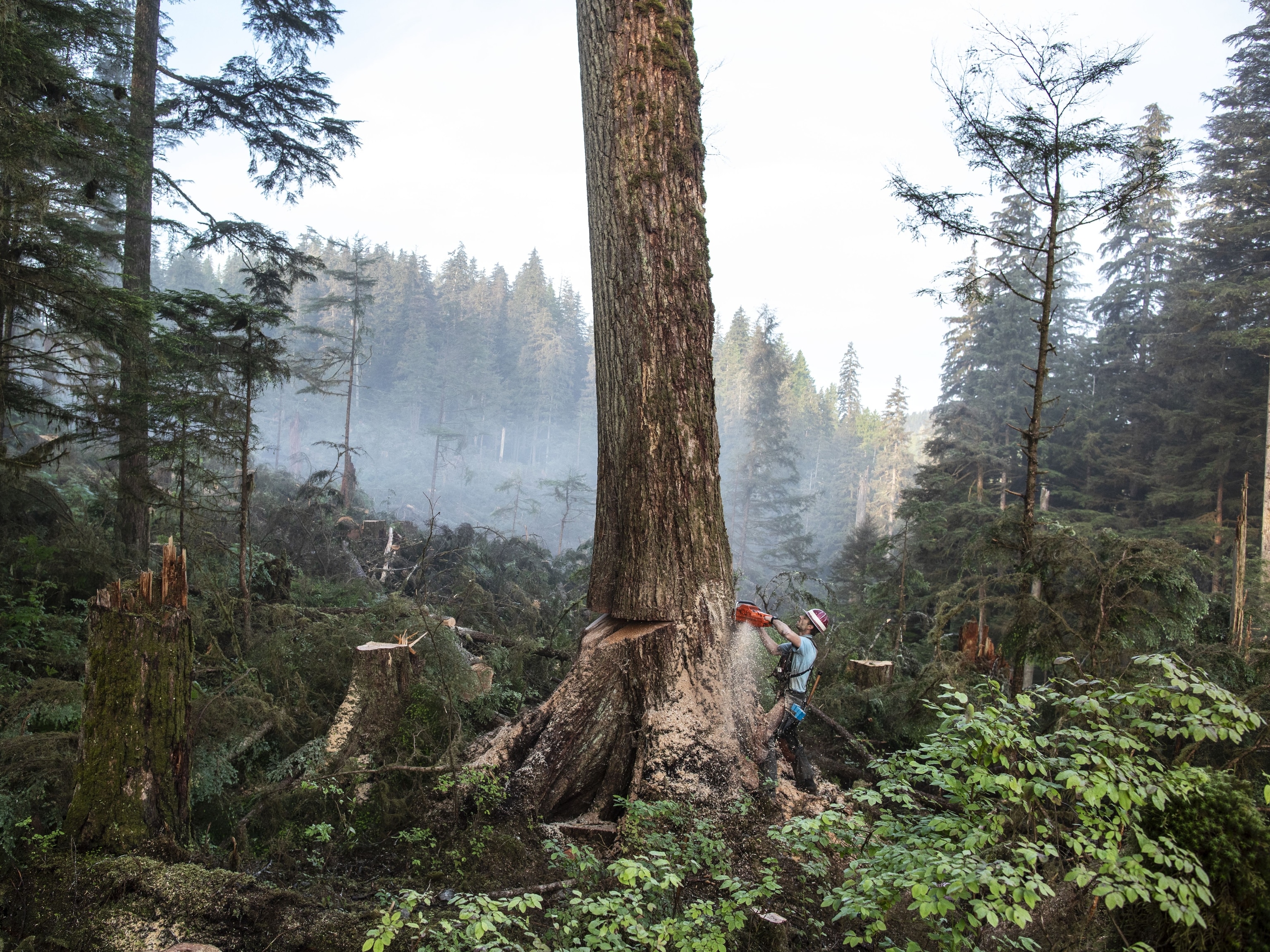
Madagascar’s famous lemurs could lose their rainforest by 2080
Deforestation and climate change could wipe out much of the island’s rainforests, a new model says—but society is not powerless to stop it.
High in the canopies of Madagascar’s eastern rainforests live two critically endangered species of ruffed lemur, among the most famous of the island’s wildlife. Now, new models of climate change and rainforest loss suggest an even bleaker future for the primates: Their habitat may be completely gone by 2080.
Like most of Madagascar’s plants and animals, black-and-white ruffed lemurs and red-ruffed lemurs are only found on the Indian Ocean nation, and they’re among the 96 of the country’s 101 lemur species that are considered threatened by extinction.
Because these two lemur species dwell exclusively in large trees, their populations quickly plummet when rainforests get logged or fragmented, making their presence an important sign of a healthy forest. The animals are also crucial seed dispersers.
The computer models, published today in the journal Nature Climate Change, reveal that a combination of deforestation and a fluctuating climate could cause rainforests to disappear within 60 years, essentially turning them to degraded grassland and cropland. Around 45 percent of Madagascar’s total forest cover has already vanished since the 1950s.(Read how illegal mining is also threatening lemurs.)
“I’ve been doing this kind of modeling for about a decade now,” says study author Adam Smith, an ecologist at the Missouri Botanical Garden, “and only twice in that time period have I pushed back from the computer in horror at what I was seeing.”
Even so, Smith urges people not to feel powerless based on the study results. “Predictions are attempts to say what will happen in the future, whereas scenarios outline options,” Smith says. (Learn more about future climate change scenarios.)
With options still on the table, hope definitely remains for Madagascar’s rainforests. For instance, the new research may also help scientists and governments decide where to best spend their efforts to save ruffed lemur habitat.
Paper parks

To uncover the fate of ruffed lemur habitat, the researchers calculated how fast Madagascar’s rainforests shrank between 2000 and 2014 and projected those rates of loss into the future. They also estimated how dry, wet, and hot the lemurs’ current habitats will be in the coming decades, based on climate predictions from the Intergovernmental Panel on Climate Change, the United Nations body dedicated to climate science.
Although both forest loss due to logging and agriculture and changing climate are major culprits behind dwindling ruffed lemur habitat, the effects of deforestation are far outpacing those of climate change, according to the models. (Read more about rainforest threats.)
Approximately 100 protected areas are scattered throughout Madagascar’s rainforests. In theory, the trees within those zones should be safe. But in reality, many of the country’s protected areas are merely “paper parks”—areas that are delineated as protected on a map but lack any real enforcement, the authors say. That allows rampant illegal forest clearing.
Most of the country’s deforestation is small-scale; local people cut down patches of rainforest and set fire to them; the resulting ash fertilizes the poor-quality soil, allowing these people to use the land for agriculture to feed their families.
“Even with this impending doom of climate change, forest loss is happening so quickly that the forests aren’t going to be around long enough for climate change to matter,” says study author Andrea Baden, a biological anthropologist at Hunter College in New York. “That’s the scariest thing for me.”
Travis Steffens, a conservation ecologist and executive director of the nonprofit Planet Madagascar, adds that the loss of Madagscar’s rainforest could be far worse than the study suggests.
“The authors are trying to be as conservative as possible,” he says, but “it’s surprising how bad it looks even when you use conservative estimates.”
An optimistic take
Yet when the researchers ran a more optimistic scenario—one that assumed none of the forest within protected areas would be lost—the result was that half of the island’s rainforests would still be intact by 2070.
So the scientists now have a clear vision of how to conserve the forests based on that best-case scenario. “We’re hoping to really push to increase protection, like actually enforce these parks and not just leave them as paper parks,” says Baden. (See beautiful photos of Madagascar.)
“We have to be really conscientious to work locally to help improve the livelihoods and health of the people in those areas, too,” she cautions.
Steffens brings up another solution: Planting new trees. “I would argue reforestation efforts must be another priority with forest maintenance being the first priority, because it’s cheaper,” he says.
But with such diverse and unique rainforests at risk of vanishing within the century, Smith says it’s also time to look outside the box for new ideas. “We might need to radically rethink what is successful conservation,” he says.
























